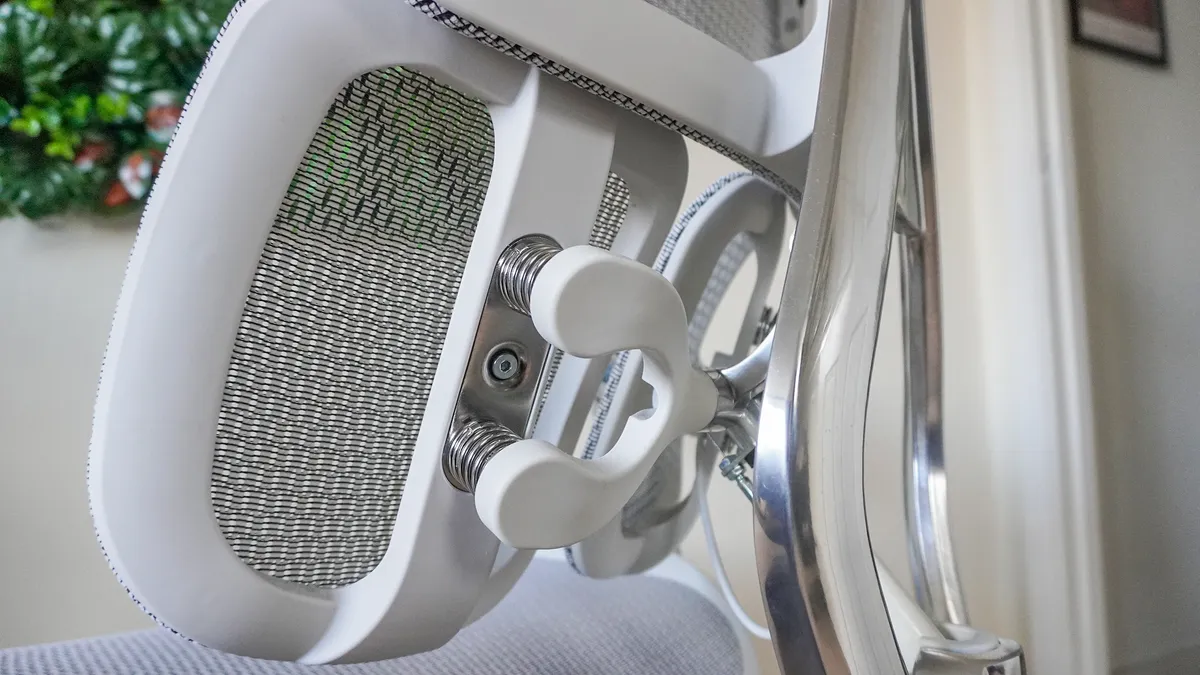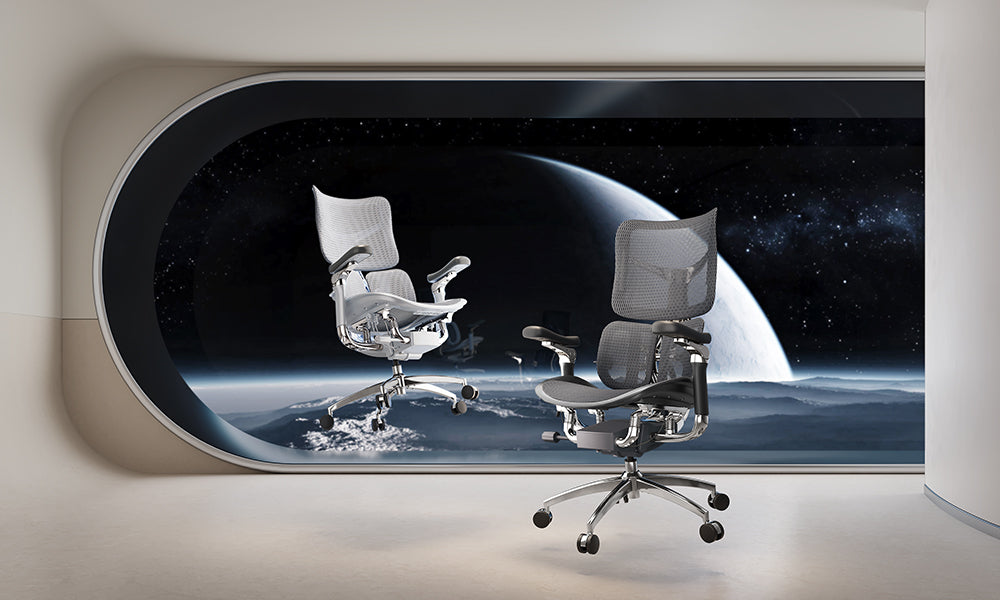The Most Frequently Asked Questions and Answers about the Sihoo Doro S300 Ergonomic Office Chair
The Sihoo Doro S300 ergonomic office chair is a premium and affordable office chair that features a unique and innovative anti-gravity mechanism that allows you to recline to a weightless position, where your body is perfectly balanced and supported by the chair. The chair also has a breathable mesh backrest, a padded seat cushion, an adjustable headrest, a lumbar support, and a 360-degree swivel base.
The Sihoo Doro S300 ergonomic office chair is designed to provide optimal comfort and support for your posture, health, and productivity. However, you may have some questions about this chair and how to use it properly and effectively. In this article, we will answer some of the most frequently asked questions about the Sihoo Doro S300 ergonomic office chair and how it can benefit you.
Q: What is the anti-gravity mechanism and how does it work?
A: The anti-gravity mechanism is the highlight of the Sihoo Doro S300 ergonomic office chair. It consists of two main components: the elastic plates and the regressive linkage. The elastic plates are made of aerospace-grade glass fiber, a material that has high elasticity and adjustability. The plates are attached to the seat chassis and the backrest, and they can adapt to the user's weight and shape, providing optimal support and comfort. The regressive linkage is a four-axis linkage structure that connects the seat and the backrest. The linkage allows the seat and the backrest to move in sync, creating a smooth and natural recline motion. The linkage also prevents the seat from lifting up when the user reclines, avoiding pressure on the thighs and ensuring full contact with the lower back.
The anti-gravity mechanism works by balancing the gravitational force and the elastic force of the plates. When the user sits on the chair, the plates deform and store elastic energy. When the user reclines, the plates release the energy and push the user back to a weightless position, where the gravitational force and the elastic force are equal and opposite. In this position, the user feels no pressure or tension on any part of the body, and the spine, neck, and limbs are aligned and relaxed.
Q: How do I adjust the chair to fit my body and preference?
A: One of the key features of the Sihoo Doro S300 ergonomic office chair is its high level of adjustability, which allows you to customize the chair to fit your body and preference. By adjusting the chair, you can ensure that you are sitting in a comfortable and ergonomic position, which can prevent or reduce pain and discomfort, as well as improve your performance and productivity. Here are some of the main adjustments you can make on the chair and how to do them:
• Height adjustment: You can adjust the seat height by using the seat height lever located under the seat. You can lift the lever to raise the chair or press it down to lower it. You should adjust the seat height so that your feet rest comfortably on the floor, your knees form a 90-degree angle, and your thighs are parallel to the ground.
• Seat depth adjustment: You can adjust the seat depth by using the seat depth lever located under the seat. You can pull the lever to slide the seat forward or backward. You should adjust the seat depth so that there is a two to four finger gap between the edge of the seat and the back of your knees.
• Backrest height adjustment: You can adjust the upper half of the backrest separately in five levels, providing adequate support to shoulders and necks, whether you stand at 5 feet (150 cm) or 6 feet 3 inches (190 cm). Simultaneously, the lumbar support remains in the right place, offering perfect support for the lower back, regardless of your stature. You can adjust the backrest height by using the backrest height lever located on the right side of the backrest. You can pull the lever to unlock the backrest and slide it up or down. You should adjust the backrest height so that the lumbar support matches the curve of your lower back and the headrest supports your neck and head.
• Tilt adjustment: You can adjust the recline angle and tension by using the tilt lever and the tilt knob located under the seat. You can lift the lever to recline the chair or press it down to return to the upright position. You can also turn the knob clockwise or counterclockwise to increase or decrease the resistance of the recline. You should adjust the tilt so that you feel comfortable and supported in any position, from upright to lying down.
• Tilt lock: You can lock the recline angle by using the tilt lock button on the right side of the seat. You can press the button to lock the recline angle or release it to unlock it. You should use the tilt lock when you want to maintain a certain recline angle for a long time, such as when reading or resting.
• Armrests adjustment: You can adjust the armrests in six directions by using the buttons and the sliders on the side of the armrests. You can press the buttons to adjust the armrests up and down, forward and backward, and inward and outward. You can also slide the armrests left and right. You should adjust the armrests so that your arms are at a 90-degree angle to your body, your wrists are straight, and your shoulders are relaxed.
Q: How do I maintain a good posture and alignment on the chair?
A: Another important practice for using the Sihoo Doro S300 ergonomic office chair is to maintain a good posture and alignment. Even if you adjust the chair to fit your body and preference, you still need to pay attention to how you sit and move on the chair. By maintaining a good posture and alignment, you can prevent or reduce the pressure and strain on your spine, muscles, joints, and nerves, which can cause pain and inflammation. You can also improve your blood circulation and oxygen delivery to your brain and body, which can enhance your energy, mood, concentration, and creativity. Here are some of the tips for maintaining a good posture and alignment on the chair:
• Keep your back straight and supported by the backrest. Avoid slouching, hunching, or leaning forward or backward too much.
• Keep your head and neck aligned with your spine. Avoid tilting your head forward or backward too much, or looking down or up too much.
• Keep your shoulders relaxed and down. Avoid shrugging, raising, or rolling your shoulders too much.
• Keep your elbows close to your body and at a 90-degree angle. Avoid extending, bending, or twisting your elbows too much.
• Keep your wrists straight and in line with your forearms. Avoid flexing, extending, or deviating your wrists too much.
• Keep your hips and knees at a 90-degree angle. Avoid crossing your legs, spreading your legs too wide, or bending your knees too much.
Q: How do I change my position and move frequently on the chair?
A: A third practice for using the Sihoo Doro S300 ergonomic office chair is to change your position and move frequently. Even if you sit in a comfortable and ergonomic position, you still need to change your position and move frequently to avoid muscle fatigue and stiffness, as well as to stimulate your blood circulation and metabolism. By changing your position and moving frequently, you can prevent or reduce the risk of developing musculoskeletal disorders, such as low back pain, neck pain, shoulder pain, and carpal tunnel syndrome. You can also enhance your creativity and innovation, as changing your position and moving frequently can activate different parts of your brain and generate new and original ideas. Here are some of the tips for changing your position and moving frequently on the chair:
• Change your position every 20 to 30 minutes. You can change your position by reclining the chair, adjusting the height, depth, or angle of the seat, backrest, headrest, or armrests, or switching between sitting and standing (if you have a height-adjustable desk).
• Move your body every 20 to 30 minutes. You can move your body by stretching your neck, shoulders, arms, wrists, back, hips, legs, and feet, or by doing some simple exercises, such as shoulder rolls, neck rotations, arm circles, wrist flexions and extensions, back twists, hip rotations, leg lifts, and ankle rotations.
• Take a break every hour or two. You can take a break by getting up from the chair, walking around, getting some water or a snack, or doing some other activities, such as talking to a colleague, checking your email, or making a phone call.
Above are some of the most frequently asked questions and answers about the Sihoo Doro S300 ergonomic chairs and how it can benefit you.




Hinterlasse einen Kommentar
Diese Website ist durch hCaptcha geschützt und es gelten die allgemeinen Geschäftsbedingungen und Datenschutzbestimmungen von hCaptcha.